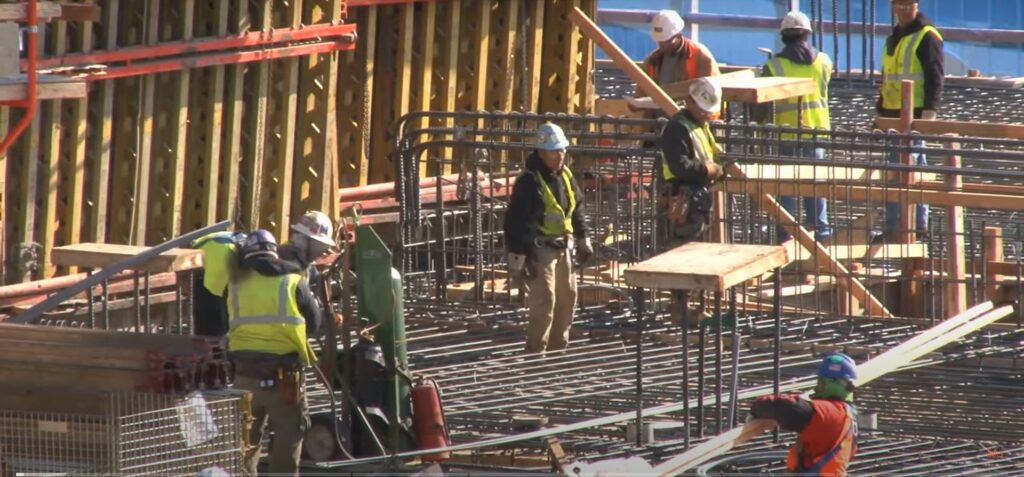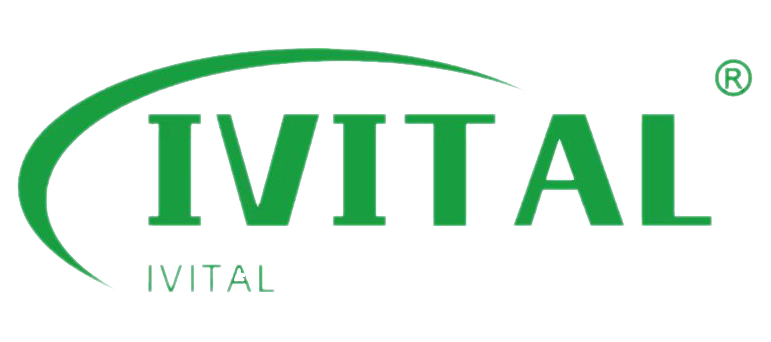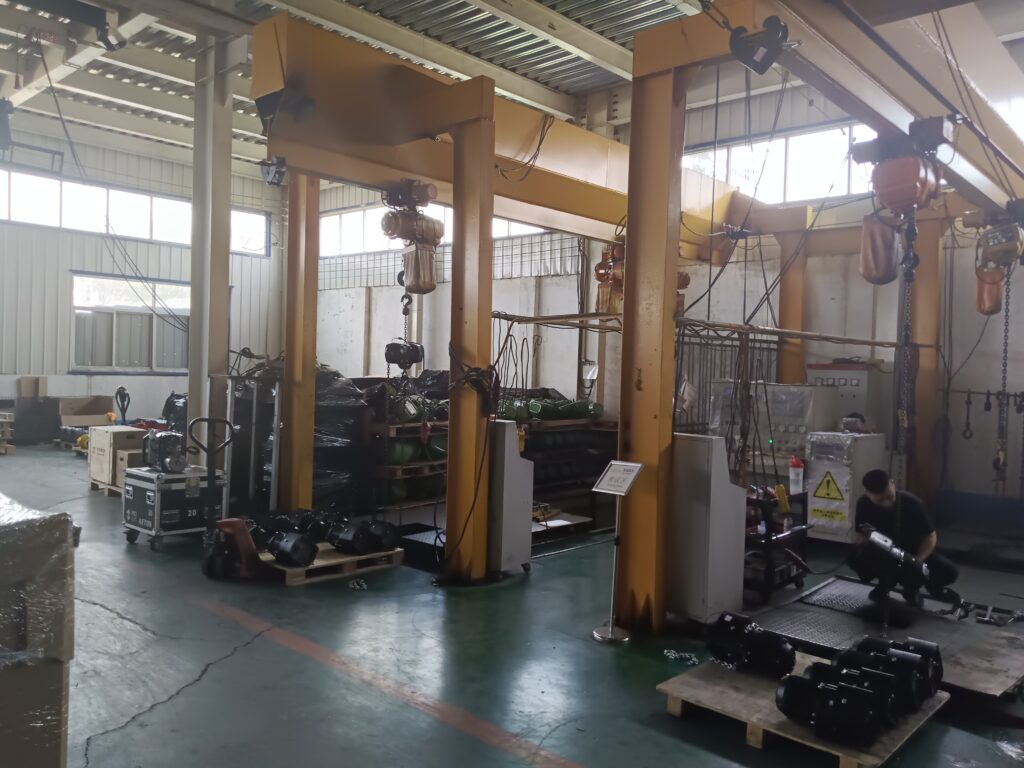Managing heavy materials at construction sites can be both time-consuming and risky. Traditional manual hoisting methods often lead to worker fatigue and safety concerns. Fortunately, the power of electric chain hoists offers a revolutionary solution, improving both efficiency and safety in construction material handling.
Electric chain hoists provide a powerful solution to the challenges of material handling in construction. These hoists are designed to lift heavy loads with precision and ease, reducing manual labor and minimizing safety risks. Capable of lifting anywhere from 0.125 tons to over 50 tons, electric chain hoists offer versatility, efficiency, and reliability, ensuring that your construction projects run smoothly and safely.
Switching to electric chain hoists not only boosts efficiency but also enhances worker safety. Let’s explore how different types and features of these hoists can further improve your construction site operations.
What Are the Three Types of Chain Hoists?

When it comes to lifting heavy materials in construction, knowing the different types of chain hoists is crucial. Let’s break down the three main types and see how each can serve your needs.
The three main types of chain hoists are manual, electric, and pneumatic. Each type offers distinct advantages, depending on your operational needs, lifting capacity, and work environment.
There are three primary types of chain hoists: manual, electric, and pneumatic, each designed to meet different lifting requirements and conditions. Let’s look at each one more closely to understand where they fit best.
1. Manual Chain Hoists
Manual chain hoists are operated by hand without any external power source. They consist of a hand chain and a lifting chain, with a hoist body equipped with gears and a braking mechanism. Advantages of manual chain hoists include their portability, low cost, and ease of operation. They are lightweight and easy to transport, making them a great choice for smaller jobs or tight spaces. Plus, they don’t require electricity, which makes them ideal in locations where power is limited.
However, manual hoists come with a few disadvantages. The biggest one is their limited lifting capacity. They are best suited for lighter loads and require physical effort to operate, which can be tiring over time.
2. Electric Chain Hoists
Electric chain hoists are powered by electricity and are the go-to choice for heavy-duty lifting on construction sites. These hoists have an electric motor that drives the lifting mechanism, and they can be controlled via a pendant or remote control. Advantages include increased lifting capacity, ease of operation, and time-saving efficiency. They can lift heavy loads quickly and with precision, improving overall productivity.
On the downside, electric chain hoists require a constant power supply, which makes them unsuitable for environments where electricity is unavailable. They also tend to be more expensive due to their motorized components.
3. Pneumatic Chain Hoists
Pneumatic chain hoists operate using compressed air, making them perfect for environments where electricity might be hazardous, such as in oil and gas or chemical plants. Advantages of pneumatic hoists include safety in explosive environments, durability in harsh conditions, and variable lifting speeds to meet specific job requirements. These hoists are built to withstand tough working conditions and can operate at different speeds based on the task.
However, pneumatic hoists are dependent on an air supply, which might be less convenient than electrical systems. They are also generally more expensive than manual hoists.
What Is the Difference Between an Electric Winch and an Electric Hoist?

When choosing between an electric winch and an electric hoist, it’s crucial to understand their key differences. These tools are designed for different types of lifting and pulling tasks, and knowing which one suits your needs will save time and effort.
Electric winches are designed for horizontal pulling, while electric hoists are made for vertical lifting. Winches use a drum to pull loads, and hoists use hooks to lift heavy materials, making them ideal for construction tasks.
Let’s break down the differences in more detail. Electric winches and electric hoists may seem similar, but their design and function serve very different purposes.
Functionality: Horizontal vs. Vertical
- Electric Winch: The main job of a winch is to pull loads horizontally. Winches are often used in industries like vehicle recovery, marine operations, or moving equipment across flat surfaces. A winch winds a rope or cable around a drum, allowing it to pull loads over long distances. For example, I’ve used a winch on a construction site to pull heavy materials up a sloping terrain—great for horizontal movement, but not for lifting.
- Electric Hoist: On the other hand, a hoist is designed to lift loads vertically. Hoists are perfect for lifting heavy materials like steel beams or machinery to specific heights. They typically have a hook or other attachments to secure the load while raising or lowering it. During a recent project, we used an electric hoist to lift construction materials from the ground up to the scaffolding—an essential tool for vertical lifting.
Operation Mode: Horizontal vs. Vertical Movement
- Winches are great for tasks requiring horizontal movement. They work by applying tension to a rope or cable to pull the load from one place to another. They can be mounted at various angles and distances from the load.
- Hoists, however, are mostly mounted in a fixed position above the load they are lifting. They can move horizontally along a beam but are primarily intended for vertical lifting. The fixed position ensures that the load is raised or lowered safely and precisely.
Speed and Capacity
- Winches generally offer higher operational speeds compared to hoists. This is because they are often used in situations where quick pulling is essential, such as towing vehicles or recovering equipment. They can handle larger horizontal loads, but they aren’t built for prolonged vertical lifting.
- Hoists, in contrast, offer more controlled lifting speeds, ensuring that loads are lifted slowly and securely. Hoists are typically designed with braking systems to hold the load in place during vertical lifting, which adds an extra layer of safety. I’ve found this feature crucial when lifting heavy construction materials, as it provides stability and reduces the risk of accidents.
Size and Installation
- Winches are usually compact and easy to install in various locations like vehicles, trailers, or even on boats. Their mobility and versatility make them great for tasks requiring flexibility. The long cables or ropes allow them to pull loads from a distance.
- Hoists, on the other hand, are typically bulkier and need to be mounted securely on beams or cranes. Their installation is more permanent, ensuring safe vertical lifting. In my experience, hoists require careful setup, especially when positioning them overhead to lift heavy materials.
How Much Weight Can an Electric Chain Hoist Lift?
When you’re choosing the right equipment for heavy lifting, understanding the lifting capacity of an electric chain hoist is crucial. Let’s take a closer look at what these hoists can handle.
Electric chain hoists can lift loads ranging from as little as 0.125 tons (250 pounds) to as much as 50 tons (100,000 pounds). Specialized models can even lift up to 100 tons (200,000 pounds).
Electric chain hoists are designed for a variety of lifting tasks in the construction industry. The lifting capacity of these hoists varies significantly, depending on the model, motor power, and specific design. Here’s a breakdown of the different types of hoists and their lifting capacities:
- Small Electric Chain Hoists: These models are typically designed for lighter loads. They can lift as little as 0.125 tons (250 pounds), making them ideal for smaller, less demanding tasks. For example, if you’re working with lightweight equipment or handling small materials on a residential project, a small electric chain hoist would be perfect.
- Standard Electric Chain Hoists: These are the most commonly used hoists on construction sites. With lifting capacities ranging from 1 ton (2,000 pounds) to 5 tons (10,000 pounds), they are versatile enough to handle most medium-duty lifting tasks. These hoists are great for lifting materials like steel beams or concrete blocks during construction.
- Heavy-Duty Electric Chain Hoists: For larger construction projects, you’ll need heavy-duty electric chain hoists. These can lift anywhere from 10 tons (20,000 pounds) to 50 tons (100,000 pounds). Such models are often used in large-scale construction sites or industrial settings where lifting heavy machinery or large structural components is necessary.
- Specialized Models for Extreme Lifting: Some hoists are specially designed to lift extremely heavy loads, with capacities up to 100 tons (200,000 pounds). These specialized hoists are often used in industries like shipbuilding or steel manufacturing, where enormous materials need to be lifted regularly.
The key factors that determine the lifting capacity include the motor’s power output, the materials used in the construction of the hoist, and the design features that improve the hoist’s efficiency. For example, hoists built with stronger metals and higher-grade components are more likely to support heavier loads.
Here’s a quick comparison of the lifting capacities of various types of electric chain hoists:
| Hoist Type | Lifting Capacity |
|---|---|
| Small Electric Hoists | 0.125 tons (250 pounds) |
| Standard Electric Hoists | 1 ton (2,000 pounds) – 5 tons (10,000 pounds) |
| Heavy-Duty Electric Hoists | 10 tons (20,000 pounds) – 50 tons (100,000 pounds) |
| Specialized Hoists | Up to 100 tons (200,000 pounds) |
Choosing the Right Hoist: When selecting a hoist, it’s important to match the lifting capacity with the needs of your project. For standard construction tasks, a 2-ton or 3-ton hoist is often sufficient. However, for projects involving large machinery or heavy construction materials, a heavy-duty hoist with a capacity of up to 50 tons may be necessary.
What Is the Best Electric Chain Hoist for Construction Lifting?

Choosing the right electric chain hoist can transform your construction site efficiency. With many options available, it’s important to know which models stand out for lifting heavy materials safely and efficiently.
Some of the best electric chain hoists for construction lifting include the Coffing JLC, CM Lodestar, and Coffing EC. These models are known for their high performance, safety features, and durability, ensuring effective lifting in demanding construction environments.
When selecting the best electric chain hoist for construction, it’s crucial to consider factors like lifting capacity, durability, and safety features. Here’s a breakdown of some of the top options that consistently stand out for construction tasks:
1. Coffing JLC
- Capacity: 1/8 ton to 2 tons
- Features: This hoist is compact with a motor brake, overload clutch, and CSA approval, ensuring smooth operation.
- Why It’s Ideal for Construction: The Coffing JLC is highly reliable, popular for its ability to lift moderate loads efficiently. It’s great for tasks where safety and precision matter, making it a trusted choice for many construction professionals.
2. CM Lodestar
- Capacity: 1/8 ton to 3 tons
- Features: Known for quiet operation, this hoist offers an environmentally friendly design with high-duty cycles.
- Why It’s Ideal for Construction: The CM Lodestar is suitable for heavy-duty applications where consistent, safe lifting is needed. Its easy maintenance features make it a good long-term investment for large-scale projects.
3. Coffing EC
- Capacity: 1/2 ton to 5 tons
- Features: Built for heavy-duty industrial use, this hoist offers smooth operation, even in demanding environments.
- Why It’s Ideal for Construction: The Coffing EC is a more expensive option, but its durability and high performance in tough conditions make it worth the investment. It’s ideal for high-capacity lifting in construction sites that demand reliability.
4. Harrington NER
- Capacity: Typically 1/2 ton to 5 tons
- Features: Known for its robust construction, the Harrington NER hoist ensures reliable performance even under heavy use.
- Why It’s Ideal for Construction: This hoist excels in environments requiring robust, heavy-duty lifting. It’s a great option for larger construction sites where high-capacity lifting is the norm.
5. CM Shopstar
- Capacity: Up to 2 tons
- Features: Designed for light to moderate lifting, this hoist is user-friendly and cost-effective.
- Why It’s Ideal for Construction: The CM Shopstar is perfect for smaller tasks and workshops where lifting capacity doesn’t need to exceed 2 tons. It’s a budget-friendly choice for projects with moderate lifting demands.
These models offer a range of lifting capacities and features, allowing you to choose the best hoist for your specific project needs. When selecting, make sure to match the hoist’s specifications to the demands of your site for optimal performance.
By choosing one of these hoists, you can ensure safe and efficient material handling on your construction projects, reducing both manual labor and safety risks.
How Much Does an Electric Chain Hoist for Construction Cost?
When selecting an electric chain hoist for construction, cost is a significant factor. Understanding the pricing structure can help you make a smart investment for your construction site.
The price of an electric chain hoist varies greatly, depending on factors such as lifting capacity and brand. Basic models for light lifting can start as low as $199, while heavy-duty hoists can exceed $40,000.
The cost of electric chain hoists for construction varies widely based on several key factors. Let’s dive into what influences the pricing and help you better understand the market.
Key Price Ranges for Electric Chain Hoists
The prices for electric chain hoists vary based on lifting capacity, brand, and additional features. Here’s a breakdown of what you can expect:
- Low-Capacity Electric Chain Hoists
These are suitable for light-duty tasks, such as lifting small materials. For capacities between 1 ton and 2 tons, prices generally range from $199.90 to $699.90ice is typical for smaller, budget-friendly models. - Mid-Range Models
If you’re looking for a bit more power, mid-range models like the JULI Electric Hoist with a 2-ton capacity typically cost between $695.00 and $699.00 . These er a balance between price and performance, making them ideal for many general construction projects. - Heavy-Duty Models
For larger construction projects with higher lifting demands, prices for high-capacity hoists can range significantly. A 5-ton electric chain hoist could cost anywhere between $5,000 and $20,000, while models with 50-ton capacities can exceed $30,000 . These hoists ar for the most demanding jobs, offering durability and precision for heavy lifts.
What Influences the Price of Electric Chain Hoists?
Several factors influence the price of electric chain hoists. These include:
- Lifting Capacity
The primary factor affecting price is the hoist’s lifting capacity. Hoists with larger capacities are naturally more expensive. A hoist with a capacity of 5 tons or more can easily cost thousands of dollars, while lighter models may be more affordable. - Brand Reputation
Brands with a long-standing reputation for quality, such as Columbus McKinnon or CMCO, often charge a premium for their products. These brands provide assurance of reliability, durability, and warranty support, which can justify the higher cost. - Additional Features
The features included with the hoist—such as remote controls, overload protection, and adjustable speeds—can also increase the price. These features enhance the hoist’s ease of use and safety but come with a cost. - Material Quality and Durability
Hoists made from higher-quality materials, like steel or aluminum alloys, can be more expensive but are typically more durable and capable of handling tougher construction environments. - Operational Mode
Hoists that offer more complex operational modes—such as travelling hoists—tend to be pricier. These hoists can move horizontally as well as vertically, providing more versatility but adding to the cost.
How Can You Make Sure You’re Getting the Best Value?
When purchasing an electric chain hoist, it’s essential to weigh your specific needs against the cost. If your project requires lifting heavy loads, investing in a high-capacity hoist may be worth the extra cost. However, if you are just starting or handling lighter materials, a smaller, more affordable model might suffice.
Before purchasing, consider factors such as:
- Lifting height: Ensure the hoist meets the height requirements for your site.
- Durability: Look for models with a good warranty and positive user reviews to ensure reliability.
- Service and support: Choose a vendor that offers reliable customer support in case of any issues with the hoist.
Conclusion
Incorporating electric chain hoists into your construction processes can greatly enhance material handling efficiency and worker safety. Whether for small tasks or large-scale lifting, these hoists offer powerful, reliable, and safe solutions. Don’t hesitate to explore the best hoist options for your next construction project.



